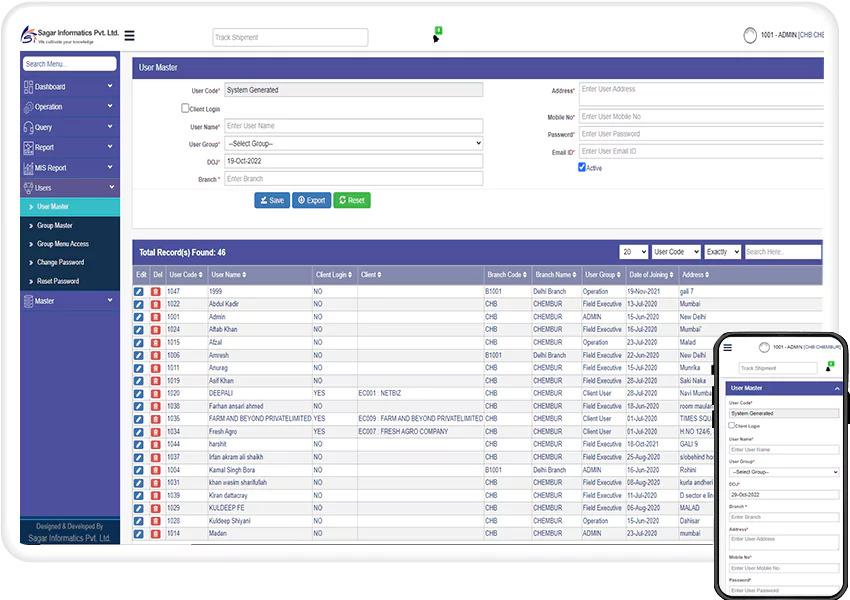Optimize Logistics with Advanced Pickup and Delivery Software Solutions

In today’s super-fast, e-commerce dominated world, logistics operations have never needed so much, even a little, maintenance. Consumers expect faster, more reliable deliveries; businesses face increasing fuel prices, pointless routes and drivers shortages. Companies can remain competitive only by adopting technology-based solutions. Due to the advanced pickup and delivery software logistics has become more productive by improving the services, cost reduction and customer satisfaction. This blog discusses how they work, what they can offer and if you should pick the very best option for your business.
Understanding the Challenges in Modern Logistics
An ever-increasing need for the logistics business, especially as far as the last mile delivery goes. As we continue to see an increase in e-commerce, consumers now expect same day or next day delivery, forcing companies to fine-tune their operations. But outdated human processes alone are not enough. Those using spreadsheets and educated guesses are likely to find inefficiencies, which means delayed deliveries, more gas used and higher operational expenses. This is where pickup and drop-off software is at use. By enabling automation and optimization of logistics operations, these tools solve big pain points for companies and give businesses the equipment to be more efficient and meet the needs and desires of consumers.
What Are Advanced Pickup and Delivery Software Solutions?
Advanced pickup and delivery software is a technology-driven solution designed to streamline logistics operations. These tools leverage cutting-edge technologies like artificial intelligence (AI), machine learning, and cloud computing to provide real-time tracking, route optimization, and automated dispatch. Key features include:
-
Real-Time Tracking and Route Optimization: The software uses GPS and IoT technologies to track vehicles in real time and optimize routes based on traffic, weather, and delivery priorities.
-
Automated Dispatch and Scheduling: Automating dispatching ensures the right driver is assigned to the right job, reducing delays and improving efficiency.
-
Analytics and Reporting: Advanced analytics provide insights into delivery performance, helping businesses identify areas for improvement.
By integrating these features, pickup and delivery software eliminates manual errors, reduces delivery times, and enhances overall operational efficiency.
Benefits of Implementing Pickup and Delivery Software
The adoption of advanced pickup and delivery software offers numerous benefits for logistics businesses:
-
Operational Efficiency: Optimized routes reduce delivery times and fuel consumption, while automated processes minimize human errors. For example, a delivery company using route optimization software can save up to 20% on fuel costs.
-
Cost Savings: By improving resource allocation and reducing inefficiencies, businesses can significantly lower operational costs. Additionally, better route planning reduces vehicle wear and tear, cutting maintenance expenses.
-
Enhanced Customer Experience: Real-time updates and accurate delivery ETAs keep customers informed, building trust and loyalty. Transparency in delivery processes also reduces customer complaints and improves satisfaction.
These benefits make pickup and delivery software a must-have tool for logistics companies looking to stay competitive in a rapidly evolving industry.
How to Choose the Right Software for Your Business
Selecting the right pickup and delivery software requires careful consideration of your business needs and goals. Here are some key factors to keep in mind:
-
Assess Your Business Needs: Identify specific pain points, such as route inefficiencies or high operational costs, and determine your goals, whether it’s scalability, cost reduction, or improved customer satisfaction.
-
Evaluate Key Features: Look for software that offers real-time tracking, route optimization, and analytics. Ensure it integrates seamlessly with your existing systems and is customizable to your unique requirements.
-
Consider Vendor Reputation: Choose a vendor with a proven track record in your industry. Ask for case studies or references to gauge their expertise and reliability.
By asking the right questions and evaluating your options, you can find a pickup and delivery software solution that aligns with your business objectives.
Future Trends in Logistics Software
The future of logistics is shaped by emerging technologies, and pickup and delivery software is at the forefront of this transformation. Here are some trends to watch:
-
AI and Machine Learning: Predictive analytics powered by AI can forecast demand, optimize routes, and improve decision-making. Autonomous vehicles and drones are also set to revolutionize last-mile delivery.
-
Sustainability: As businesses prioritize environmental responsibility, pickup and delivery software can help reduce carbon footprints by optimizing routes and promoting fuel efficiency.
-
Integration with Emerging Technologies: Blockchain can enhance transparency in transactions, while 5G connectivity ensures faster, more reliable communication between devices.
These trends highlight the evolving role of pickup and delivery software in creating smarter, more sustainable logistics operations.
Conclusion
Advanced pickup and delivery software is a game-changer for the logistics industry. By automating processes, optimizing routes, and providing real-time insights, these tools enable businesses to operate more efficiently, reduce costs, and deliver exceptional customer experiences. As technology continues to evolve, staying ahead with the right software solution will be crucial for future-proofing your logistics operations.
If you’re ready to transform your logistics processes, explore advanced pickup and delivery software solutions tailored to your business needs. Embrace innovation today to stay competitive tomorrow.







